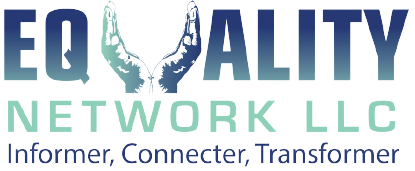In the race to integrate Artificial Intelligence (AI) across industries, we’re unwittingly constructing a digital landscape fraught with hidden pitfalls that threaten the very fabric of equity, diversity, and inclusion (EDI) in our society. As AI systems become increasingly ubiquitous in decision-making processes, from healthcare diagnostics to hiring practices, they carry with them the potential to Perpetuate existing biases, amplify Algorithmic discrimination, widen Inequality gaps, and further entrench Discrimination in ways both subtle and profound.
In Part 1 of this EDI Tech Series on AI, we had an introduction to Artificial Intelligence (AI) by answering the 7 Questions You Have About Artificial Intelligence (But Are Afraid To Ask), then we moved into Part 2 with a discussion about AI & EDI: What’s on the Horizon? How Artificial Intelligence Can Enhance Equity, Diversity, and Inclusion (EDI) Initiatives in the U.S. and Canada. Now, we’ll address exploring the Dark Side of AI and How Artificial Intelligence Could Undermine Diversity and Inclusion Efforts. This post delves into the double-edged sword of AI integration, exploring how these powerful tools, designed to enhance efficiency and objectivity, may instead be coding bias into the foundation of our digital future.
As Artificial Intelligence (AI) is deployed across a number of industries and becomes increasingly prevalent offering numerous benefits, it also presents significant challenges, particularly in the realm of equity, diversity, and inclusion (EDI). While these AI powered tools and algorithms demonstrate AI’s potential to enhance efficiency and decision-making, they also raise serious concerns regarding EDI in the United States, Canada, and globally. Let’s explore how AI has us P.A.I.D. in Bias and The Perilous Algorithm of Inequality and Discrimination that Undermines EDI:
P – Perpetuation and Amplification of Existing Biases: Artificial Intelligence (AI) systems are trained on historical data, which often reflects societal biases and inequalities. When this biased data is applied to decision-making processes, these systems can perpetuate and even amplify existing biases. For example, in employee recruitment, AI tools trained on historical hiring data may inadvertently discriminate against underrepresented groups if past hiring practices were biased. Part of the reason for this deficit in AI systems exists because the AI industry itself faces significant diversity challenges. In the U.S. and Canada, there is a notable underrepresentation of women, People Of Color, racialized groups, and other marginalized groups in AI research and development roles, and this lack of diversity can lead to AI systems that fail to consider diverse perspectives and experiences, thereby potentially exacerbating inequalities.
A – Algorithmic Discrimination: AI systems can inadvertently discriminate against certain groups due to flaws in their algorithms or training data. This can lead to unfair outcomes in critical areas such as credit scoring, criminal justice, housing, healthcare, and resource allocation. For instance, an AI system used in healthcare might provide less accurate diagnoses for certain racial groups if it was primarily trained on data from one demographic of the patient population.
I – Inequality (Increasing the Digital Divide + Negative Economic Impact): The integration of AI technologies can widen the digital divide, as access to these technologies is not equally distributed. Marginalized communities, including low-income groups and rural populations, may have limited access to AI-powered services, further exacerbating existing inequalities in education, healthcare, and economic opportunities. And while Artificial Intelligence can create new job opportunities, it also has the potential to automate many existing roles thus putting people out of a job. This job displacement may disproportionately affect certain demographic groups, particularly those in low-skilled or routine jobs. Without adequate retraining and support systems, this would lead to increased economic inequality and social stratification.
 D – Discrimination: Artificial Intelligence can further entrench discrimination as their systems often rely on vast amounts of personal data. The collection and use of this data raise significant privacy concerns, particularly for marginalized communities who may be more vulnerable to surveillance and data exploitation. This can lead to a chilling effect on free expression and participation in digital spaces for these groups. Additionally, many AI systems operate as “black boxes”, making it difficult to understand how their algorithms arrived at their decisions. This lack of transparency can make it challenging to identify and address biases or discriminatory practices, particularly when these systems are used in high-stakes decision-making processes like job applicant screenings, loan approvals, or criminal sentencing. Lastly, AI systems developed primarily in Western contexts will not adequately account for cultural nuances and global diversity, potentially leading to a homogenization of cultural expressions and practices. This is particularly concerning for indigenous communities and cultural groups that have been historically marginalized and excluded and whose perspectives and cultural experiences are already underrepresented in Artificial Intelligence development.
D – Discrimination: Artificial Intelligence can further entrench discrimination as their systems often rely on vast amounts of personal data. The collection and use of this data raise significant privacy concerns, particularly for marginalized communities who may be more vulnerable to surveillance and data exploitation. This can lead to a chilling effect on free expression and participation in digital spaces for these groups. Additionally, many AI systems operate as “black boxes”, making it difficult to understand how their algorithms arrived at their decisions. This lack of transparency can make it challenging to identify and address biases or discriminatory practices, particularly when these systems are used in high-stakes decision-making processes like job applicant screenings, loan approvals, or criminal sentencing. Lastly, AI systems developed primarily in Western contexts will not adequately account for cultural nuances and global diversity, potentially leading to a homogenization of cultural expressions and practices. This is particularly concerning for indigenous communities and cultural groups that have been historically marginalized and excluded and whose perspectives and cultural experiences are already underrepresented in Artificial Intelligence development.
These are just a few examples of the costs society might be paying as the price for AI adoption and highlights the potential negative impacts on equality and fairness. While AI offers significant potential benefits across various industries, its integration must be approached with careful consideration of its impact on equity, diversity, and inclusion. As we navigate this complex terrain, it becomes clear that the promise of AI comes with a price – one that could disproportionately affect marginalized communities and undermine the fragile progress in EDI that has been gained across the United States, Canada, and beyond. As AI continues to evolve, it’s crucial to carefully consider both its potential benefits and risks in various applications. To mitigate these risks, it is important to prioritize diverse, global representation and cultural experiences in AI development, implement rigorous testing for a range of biases, ensure transparency and accountability in AI systems, and both develop and enforce policies that promote equitable access to AI technologies. Only through these concerted efforts can we harness the power of Artificial Intelligence while safeguarding the principles of fairness and inclusion in our increasingly AI-driven world.
Comment below (or message me on LinkedIn after connecting).
By Kindra Cotton of SSS for Success / Simplified Cybersecurity Solutions*
*Simplified Cybersecurity Solutions is a joint venture from SSS for Success (Simplified Social Media Solutions).

Felecia Phillips Ollie DD (h.c.) is the inspiring leader and founder of The Equality Network LLC (TEN). With a background in coaching, travel, and a career in news, Felecia brings a unique perspective to promoting diversity and inclusion. Holding a Bachelor’s Degree in English/Communications, she is passionate about creating a more inclusive future. From graduating from Mississippi Valley State University to leading initiatives like the Washington State Department of Ecology’s Equal Employment Opportunity Program, Felecia is dedicated to making a positive impact. Join her journey on our blog as she shares insights and leads the charge for equity through The Equality Network.




